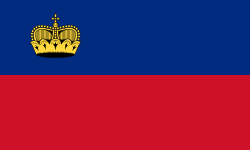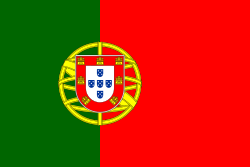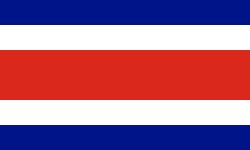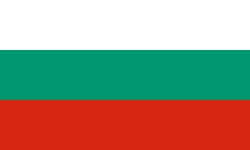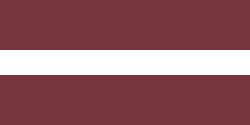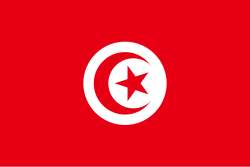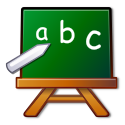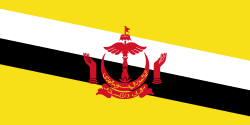Undervisningspligt

Undervisningspligt refererer til en periode, typisk fastsat ved lov, hvor alle børn skal modtage undervisning. Perioden med undervisningspligt varierer fra land til land, se kort. Undervisningen vil typisk foregå i en offentlig eller privat grundskole eller via hjemmeundervisning. I nogle lande er der også skolepligt, hvilket betyder at det er obligatorisk at gå i skole, og man må således ikke nøjes med hjemmeundervisning i disse lande.
I visse lande, f.eks. Canada, modtager familier, hvis børn undervises uden for skolesystemet, tilskud fra det offentlige.[1]
Den internationale konvention om økonomiske, sociale og kulturelle rettigheder fra 1966 fastsætter, at konventionens medlemslande skal tilbyde gratis grundskoleundervisning til alle børn og have undervisningspligt.[2]
Alle lande med undtagelse af Bhutan, Papua Ny Guinea, Salomonøerne og Vatikanstaten har undervisningspligt.
Danmark
I Danmark er der 10 års undervisningspligt der, med enkelte undtagelser, starter i august det år et barn fylder seks.[3] Via Grundloven er det bestemt at alle børn har ret til fri undervisning i folkeskolen eller til en undervisning, der står mål med, hvad der almindeligvis kræves der.[4] I praksis betyder det at undervisningspligten kan opfyldes i folkeskolens grundskole, på en fri eller privat grundskole, via hjemmeundervisning eller, efter 7. klassetrin, på en efterskole. Folkeskolens struktur for de 10 undervisningspligtige år består af en børnehaveklasse og 1.-9. klasse. Deltagelse i folkeskolens 10. klasse er således frivillig. [3]
I Danmark fandtes i efteråret 2022:[5]
- 1.066 folkeskoler (1296 afdelinger)[a]
- 547 friskoler og private grundskoler
- 243 efterskoler
- 121 specialskoler (143 afdelinger)[a]
I skoleåret 2020/2021 modtog 1238 børn hjemmeundervisning, en stigning fra 475 børn i 2018, hvilket omtrent svarer til en promille af det samlede antal grundskoleelever.[6][7]
Undervisningspligten blev indført i Danmark 23. januar 1739 ved forordning af Kong Christian 6..[8] Først i 1789 blev Den store Skolekommission nedsat, og kommissionens arbejde førte til folkeskolelovene af 1806 og 1814.[9]
Tyskland
I Tyskland, hvor der er skolepligt, i modsætning til de fleste andre europæiske landes undervisningspligt, har organisationen Netzwerk Bildungsfreiheit siden 2006 arbejdet for at afskaffe denne skolepligt.[10] Denne paraplyorganisation omfatter bl.a. sammenslutningerne Bundesverband Natürlich Lernen! e. V.,[11] Stiftung Netzwerk Hochbegabung, Europäische Forum für Freiheit im Bildungswesen (effe), men også Schulbildung in Familieninitiative e. V., og Deutschhilfe für Ausländer. Også enkeltpersoner, herunder universitetsprofessorer, pædagoger, læger, advokater, psykologer, terapeuter samt forældre og studerende med religiøs eller alternativ tilgang til hjemmeundervisning, er tilknyttet Netzwerk Bildungsfreiheit.
Ungdomsafdelingen af De frie demokrater FDP har siden 2018 foreslået, at man i delstaten Brandenburg, som omgiver Berlin, erstatter skolepligt med undervisningspligt. Efter forslaget skal børn fra 5 års alder to gange årligt fremlægge et præstationsbevis. Forældrene kan frit bestemme, i hvilken sammenhæng den viden, der skal gives, formidles, hvad enten det er i en privatskole, i familietimer eller i en konventionel skole. Hvis der ikke fremlægges bevis for præstation, omfattes barnet fra begyndelsen af næste skoleår af skolepligt.[12]
Også det politiske parti Piratenpartei Deutschland går ind for at erstatte skolepligt med undervisningspligt, idet man argumenterer, at uddannelse også kan tilegnes uden for institutioner, samt mener, skolepligten forhindrer mennesker i at forfølge alternative uddannelsesveje, idet enhver bør have ret til fri og selvbestemt adgang til viden og uddannelse. Erhvervelse af kvalifikationer skal være mulig, uanset hvordan og hvor det foregår. Partiet vil ved kontrolbesøg sikre, at eleverne faktisk uddanner sig selv og med tilstrækkelig succes.[13]
Lande med undervisningspligt og årstallet for dens indførelse
1700-tallet
1800-tallet
- 1805:
 Liechtenstein[16]
Liechtenstein[16] - 1814:
 Danmark (Folkeskoleloven)[15]
Danmark (Folkeskoleloven)[15] - 1817: Travancore
- 1824: Det Osmanniske Rige[17]
- 1834:
 Grækenland[15]
Grækenland[15] - 1841:
 Hawaii[18]
Hawaii[18] - 1842:
 Sverige[15]
Sverige[15] - 1844:
 Portugal[15]
Portugal[15] - 1852:
 Massachusetts[18]
Massachusetts[18] - 1857:
 Spanien[19]
Spanien[19] - 1864:
 Washington D.C.,[18]
Washington D.C.,[18]  Rumænien
Rumænien - 1867:
 Vermont[18]
Vermont[18] - 1868:
 Montenegro
Montenegro - 1869:
 Slovenien,
Slovenien,  Italien,[20]
Italien,[20]  Costa Rica[21]
Costa Rica[21] - 1870:
 Colombia[22]
Colombia[22] - 1871:
 Michigan,
Michigan,  New Hampshire,
New Hampshire,  Washington,[18]
Washington,[18]  Ontario,[23]
Ontario,[23]  Western Australia[24]
Western Australia[24] - 1872:
 Japan,
Japan,  Scotland,[25]
Scotland,[25]  Connecticut (kunne de facto ikke håndhæves),[18]
Connecticut (kunne de facto ikke håndhæves),[18]  Victoria[24]
Victoria[24] - 1873:
 Nevada,[18]
Nevada,[18]  British Columbia[23]
British Columbia[23] - 1874:
 Schweiz,[15]
Schweiz,[15]  Kansas,
Kansas,  New York,
New York,  California[18]
California[18] - 1875:
 New Jersey,
New Jersey,  Maine,[18]
Maine,[18]  South Australia[24]
South Australia[24] - 1876:
 Wyoming,[18]
Wyoming,[18]  Guyana,
Guyana,  Surinam[26]
Surinam[26] - 1877:
 New Zealand,
New Zealand,  Uruguay,[22]
Uruguay,[22]  Ohio,[18]
Ohio,[18]  Prince Edward Island[23]
Prince Edward Island[23] - 1878:
 Bulgarien
Bulgarien - 1879:
 Wisconsin[27]
Wisconsin[27] - 1880:
 England,[15]
England,[15]  Wales,[15]
Wales,[15]  New South Wales,[24]
New South Wales,[24]  Venezuela[28]
Venezuela[28] - 1882:
 Frankrig,[15]
Frankrig,[15]  Serbia[29]
Serbia[29] - 1883:
 Montana,
Montana,  Illinois,
Illinois,  North Dakota,
North Dakota,  South Dakota,
South Dakota,  Rhode Island,[18]
Rhode Island,[18]  Nova Scotia[23]
Nova Scotia[23] - 1884:
 Argentina[22]
Argentina[22] - 1885:
 Minnesota[18]
Minnesota[18] - 1886:
 Colombia (afskaffet)[22]
Colombia (afskaffet)[22] - 1887:
 Idaho,
Idaho,  Nebraska[18]
Nebraska[18] - 1889:
 Norge,[30]
Norge,[30]  Oregon,
Oregon,  Colorado[18]
Colorado[18] - 1890:
 Barbados,[31]
Barbados,[31]  Utah[18]
Utah[18] - 1891:
 New Mexico[18]
New Mexico[18] - 1892:
 Irland[15]
Irland[15] - 1895:
 Pennsylvania[18]
Pennsylvania[18] - 1896:
 Kentucky,
Kentucky,  Hawaii[18]
Hawaii[18] - 1897:
 Ecuador,[22]
Ecuador,[22]  Indiana,
Indiana,  West Virginia[18]
West Virginia[18] - 1899:
 Arizona,[18]
Arizona,[18]  Puerto Rico
Puerto Rico
1900-tallet
- 1900:
 Nederlandene,[15]
Nederlandene,[15]  Queensland[24]
Queensland[24] - 1902:
 Iowa,
Iowa,  Maryland[18]
Maryland[18] - 1904:
 Guam[32]
Guam[32] - 1905:
 Peru,
Peru,  Tennessee,
Tennessee,  Missouri,[18]
Missouri,[18]  New Brunswick[23]
New Brunswick[23] - 1906:
 Namibia (kun for hvide børn med mindre end 4 km til den nærmeste skole)[33]
Namibia (kun for hvide børn med mindre end 4 km til den nærmeste skole)[33] - 1907:
 Island,[34]
Island,[34]  Delaware,
Delaware,  North Carolina,
North Carolina,  Oklahoma[18]
Oklahoma[18] - 1908:
 Virginia[18]
Virginia[18] - 1909:
 Paraguay,[22]
Paraguay,[22]  Arkansas,[18]
Arkansas,[18]  Saskatchewan[23]
Saskatchewan[23] - 1910:
 Louisiana,[18]
Louisiana,[18]  Alberta[23]
Alberta[23] - 1912:
 Luxembourg[15]
Luxembourg[15] - 1913:
 Albanien[35]
Albanien[35] - 1915:
 Alabama,
Alabama,  South Carolina,
South Carolina,  Florida,
Florida,  Texas[18]
Texas[18] - 1916:
 Georgia,[18]
Georgia,[18]  Manitoba,[23]
Manitoba,[23]  Tasmanien[24]
Tasmanien[24] - 1917:
 Mexico,[36]
Mexico,[36]  Gibraltar[37]
Gibraltar[37] - 1918:
 Mississippi[18]
Mississippi[18] - 1919:
 Belgien,[15]
Belgien,[15]  Poland (kun for børn med mindre end 3 km til den nærmeste skole ),[38]
Poland (kun for børn med mindre end 3 km til den nærmeste skole ),[38]  Letland, hele
Letland, hele  Tyskland (Weimarrepublikken)[39]
Tyskland (Weimarrepublikken)[39] - 1920:
 Chile,[22]
Chile,[22]  Estland,[40]
Estland,[40]  Swaziland (kun hvide børn)
Swaziland (kun hvide børn) - 1921:
 Finland,[41]
Finland,[41]  Thailand[42]
Thailand[42] - 1923:
 Nauru[43]
Nauru[43] - 1924:
 Ukrainske SSR[44]
Ukrainske SSR[44] - 1925:
 Mongoliet[45]
Mongoliet[45] - 1926:
 Hviderussiske SSR[44]
Hviderussiske SSR[44] - 1927:
 Colombia (genindført)[22]
Colombia (genindført)[22] - 1929:
 Alaska[18]
Alaska[18] - 1930:
 Indien,
Indien,  USSR[44]
USSR[44] - 1935:
 Afghanistan[46]
Afghanistan[46] - 1942:
 Newfoundland[23]
Newfoundland[23] - 1943:
 Quebec,[23]
Quebec,[23]  Iran[47]
Iran[47] - 1946:
 Malta[48]
Malta[48] - 1949:
 Israel[20]
Israel[20] - 1951:
 Libyen[49]
Libyen[49] - 1952:
 Jordan[50]
Jordan[50] - 1953:
 Egypten,[51]
Egypten,[51]  Sydkorea[52]
Sydkorea[52] - 1956:
 Polen (alle børn)[38]
Polen (alle børn)[38] - 1960:
 Tchad
Tchad - 1961:
 Ghana[53]
Ghana[53] - 1962:
 Cypern,[54]
Cypern,[54]  Mali
Mali - 1963:
 Algeriet,[55]
Algeriet,[55]  Morocco[56]
Morocco[56] - 1964:
 Mozambique (børn med mindre end 3 miles til den nærmeste skole)
Mozambique (børn med mindre end 3 miles til den nærmeste skole) - 1965:
 Kuwait[57]
Kuwait[57] - 1968:
 Taiwan[58][59][60]
Taiwan[58][59][60] - 1971:
 Forenede Arabiske Emirater[61]
Forenede Arabiske Emirater[61] - 1973:
 Indonesien
Indonesien - 1975:
 Somalia[62]
Somalia[62] - 1976:
 Irak
Irak - 1981:
 Seychellerne,[63]
Seychellerne,[63]  Syrien[64]
Syrien[64] - 1986:
 Kina[65]
Kina[65] - 1988:
 Brasilien,[66]
Brasilien,[66]  Filippinerne[67]
Filippinerne[67] - 1990:
 Bangladesh,[68]
Bangladesh,[68]  Yemen,
Yemen,  Namibia (all children)
Namibia (all children) - 1991:
 Tunesien[69]
Tunesien[69] - 1994:
 Samoa
Samoa - 1996:
 Laos,[70]
Laos,[70]  Afghanistan (ophævet for piger)[46]
Afghanistan (ophævet for piger)[46] - 1998:
 Libanon,[71]
Libanon,[71]  Sudan[72]
Sudan[72]
2000-tallet
- 2000:
 Singapore[73]
Singapore[73] - 2001:
 Afghanistan (reintroduceret for piger),[46]
Afghanistan (reintroduceret for piger),[46]  Mauretanien[74]
Mauretanien[74] - 2003:
 Liberia,[75]
Liberia,[75]  Malaysia,[76]
Malaysia,[76]  Sierra Leone[77]
Sierra Leone[77] - 2005:
 Bahrain[78]
Bahrain[78] - 2007:
 Brunei[79]
Brunei[79] - 2008:
 Uganda,[80]
Uganda,[80]  Oman[81]
Oman[81] - 2009:
 Connecticut (pligtigt tidligere, men blev ikke håndhævet før 2009)
Connecticut (pligtigt tidligere, men blev ikke håndhævet før 2009) - 2010:
 Lesotho[82]
Lesotho[82] - 2021:
 Afghanistan (Mellemtrin afskaffet for piger)[83]
Afghanistan (Mellemtrin afskaffet for piger)[83]
Lande uden undervisningspligt
Kritik
Mens obligatorisk undervisning for det meste ses som vigtig og nyttig, anses obligatorisk skolegang af nogle som forældet og kontraproduktiv i en moderne verden, og har gentagne gange været genstand for skarp kritik.[87] Kritikere af obligatorisk skolegang hævder, at sådan undervisning krænker børns frihed; er en metode til politisk kontrol,[88] er en uhensigtsmæssig måde at lære børn, hvordan de skal håndtere virkeligheden uden for skolen,[89] samt kan påvirke børn negativt, og føre til øget apati, mobning, stress og depression.[90]
Noter
Referencer
- ^ Rainer Hank (2007):Erklär mir die Welt (73) Warum ist die staatliche Schulpflicht unnötig?
- ^ International Covenant on Economic, Social and Cultural Rights. ohchr.org. Hentet 12/12-2023
- ^ a b Folkeskoleloven https://www.retsinformation.dk/eli/lta/2022/1396 Undervisningspligt, se §32-35 Hentet: 27/3/2023
- ^ retsinformation.dk: Danmarks Riges Grundlov (Grundloven), se §76
- ^ Antal grundskoler, Børne- og Undervisningsministeriet, hentet 10. december 2023
- ^ "Flere børn får hjemmeundervisning", folkeskolen.dk, 5. september 2018, hentet 25. januar 2020
- ^ Stor stigning i antallet af hjemmeunderviste børn: Hjalte og Trine står selv for dansk og matematik. DR. Hentet 23/1-2022
- ^ danmarkshistorien.dk: Forordning om Skolerne på Landet i Danmark, 23. januar 1739 Citat: "...'Forordning om Skolerne paa Landet i Danmark' fra 1739 som gengivet i Kong Christian den Siettes Allernaadigste Forordninger Og Aabne Breve Fra Aar 1737 til 1741, s. 4-25. Se hele lovteksten her...Vi anseet det for een af de største Velgierninger for Vore kiære og tro Undersaatter, og for en u-forbigiengelig Nødvendighed for Landet, efter Vores Høyst-Saligste Herr Faders høylovlig Ihukommelse Hans Exempel, at lade Danske Skoler overalt i Vort Rige Danmark paa en bestandig Foed saaledes indrette, at alle og enhver, end og de fattigste Børn, overalt paa Landet, kunde tilstrækkeligen underviises om Troens Grund, samt Salighedens Vey, Orden og Middeler, efter Guds Ord og den Evangeliske Kirkes sande i Børne-Lærdommen korteligen forfattede Lære, saa og i at læse, skrive og regne, som saadanne Videnskaber, der ere alle og enhver, af hvad Stand og Vilkor de end maatte være, nyttige og fornødne, og til den Ende Allernaadigst at anbefale Vore Stifts-Amtmænd og Bisper over alt i Vores Rige Danmark, saadanne Skolers Indrettelse, hvor de behøves, og det ey er gandske u-giørligt, saa snart mueligt, paa følgende Maade at besørge...", backup
- ^ Ole Feldbæk: "Den lange fred. 1700-1800" (i: Olaf Olsen (red.): Gyldendal og Politikens Danmarkshistorie, bind 9; København 1990; ISBN 87-89068-11-4, s. 186f
- ^ Netzwerk Bildungsfreiheit - Dachverband der Homeschooler
- ^ Bundesverband Natürlich Lernen! e. V.
- ^ "Junge Liberale: Schulpflicht ist überholt | Junge Liberale Brandenburg e.V." (tysk). Hentet 2021-05-19.
- ^ Peter Amende (2012). "Positionspapier – Bildungsrecht und Bildungspflicht statt Schulbesuchspflicht". Piratenpartei Berlin (tysk). Hentet 2021-04-11.
- ^ Forordning om Skolerne på Landet i Danmark, 23. januar 1739 på danmarkshistorien.dk
- ^ a b c d e f g h i j k l m Grinin, Leonid E.; Ilyin, Ilya V.; Herrmann, Peter; Korotayev, Andrey V. (2016). Globalistics and globalization studies: Global Transformations and Global Future. ООО "Издательство "Учитель". s. 66. ISBN 978-5705750269.
- ^ School system
- ^ Examination of Mahmut II's 1824 Edict of Talim-i Sıbyan (Education of Infants) on the Compulsion of the Primary Education in Terms of the Rights of the Child
- ^ a b c d e f g h i j k l m n o p q r s t u v w x y z æ ø å aa ab State Compulsory School Attendance Laws
- ^ "Education in Spain: Close-up of Its History in the 20th Century" (PDF). Arkiveret fra originalen (PDF) 12. december 2019. Hentet 10. december 2023.
- ^ a b 100 Years of Educational Reforms in Europe: a contextual database
- ^ COSTA RICA'S EDUCATION SYSTEM
- ^ a b c d e f g h Aubry, Carla; Geiss, Michael; Magyar-Haas, Veronika; Oelkers, Jürgen (2014). Education and the State: International perspectives on a changing relationship. Routledge. s. 47-8. ISBN 9781317678236.
- ^ a b c d e f g h i j Philip Oreopoulos: Canadian Compulsory School Laws and their Impact on Educational, 2005
- ^ a b c d e f Free, compulsory and secular Education Acts
- ^ "Part 4: The 1872 Education (Scotland) Act". Moray House School of Education and Sport, University of Edinburgh. 13. juli 2015. Hentet 7. november 2022.
- ^ The status of Dutch in post-colonial Suriname
- ^ Education in Wisconsin
- ^ Sanchez, George I. (1963), The Development of Education in Venezuela, Office of Education (DHEW), Washington, DC., p. v
- ^ Serbia
- ^ "Norway" (PDF). Arkiveret fra originalen (PDF) 30. november 2020. Hentet 10. december 2023.
- ^ Historical developments of education in Barbados
- ^ George Leland Dyer: Order No. 80, 1904
- ^ "Education in Namibia" (PDF). s. 45.
- ^ "Iceland: Education". Arkiveret fra originalen 11. februar 2021. Hentet 10. december 2023.
- ^ Development of Education during the Years 1944 – 1948 in Albania
- ^ Constitution of Mexico
- ^ Edward G. Archer: Gibraltar, Identity and Empire
- ^ a b Dz.Pr.P.P. 1919/14/147
- ^ "documentArchiv.de - Verfassung des Deutschen Reichs ["Weimarer Reichsverfassung"] (11.08.1919)". www.documentarchiv.de. Hentet 2020-11-02.
- ^ "Educational Policies: Estonia (2014)". Arkiveret fra originalen 5. august 2019. Hentet 10. december 2023.
- ^ "Finland: Evolution of Educational Provision". Arkiveret fra originalen 17. maj 2019. Hentet 10. december 2023.
- ^ "The Development of Primary Education in Thailand and Its Present Challenges" (PDF). Arkiveret fra originalen (PDF) 11. februar 2021. Hentet 10. december 2023.
- ^ Rapatahana, Vaughan; Bunce, Pauline (2012). English Language as Hydra: Its Impacts on Non-English Language Cultures. Multilingual Matters. s. 27-28. ISBN 978-1-84769-752-3.
- ^ a b c "Всеобщее обучение". otrok.ru (russisk). Hentet 1. maj 2019.
- ^ Literacy country study: Mongolia
- ^ a b c "History of educational system in Afghanistan". Help the Afghan Children. 12. maj 2003. Hentet 1. maj 2019.
- ^ Encyclopædia Iranica: General Survey of Modern Education
- ^ "History of the University". University of Malta. Arkiveret fra originalen 30. juni 2011. Hentet 2. februar 2011.
- ^ Constitution of Libya (1951)
- ^ Constitution of Jordan
- ^ Education in Egypt's development: the need for a wider system of appraisal
- ^ Historical Review of Korea's Education
- ^ "Education Act, 1961". Arkiveret fra originalen 15. februar 2020. Hentet 10. december 2023.
- ^ THE EDUCATIONAL SYSTEM IN CYPRUS
- ^ Algeria
- ^ Diyen, Hayat 2004,"reform of secondary education in Morocco: Challenges and Prospects." Prospects, vol XXXIV.no.2, pp212
- ^ "Kuwait Education".
- ^ Education in Taiwan
- ^ "Republic of China Ministry of Education". Arkiveret fra originalen 18. januar 2022. Hentet 10. december 2023.
- ^ "National Central Library Admonition of Nine Years: Compulsory Education". Arkiveret fra originalen 18. januar 2022. Hentet 10. december 2023.
- ^ A History of Education in the United Arab Emirates and Trucial Sheikdoms
- ^ Somalia – Education
- ^ A country study: Seychelles
- ^ Increasing The School Access in Azaz City, Syria: A GIS-Based Set Covering Model
- ^ Compulsory Education Law of the People’s Republic of China, 1986
- ^ http://www.planalto.gov.br/ccivil_03/constituicao/constituicao.htm Skabelon:Bare URL inline
- ^ Republic Act No. 6655, Chan Robles Law Library.
- ^ Compulsory Primary Education Act, 1990
- ^ Education in the Maghreb: Tunisia
- ^ "World Data on Education: Laos" (PDF). Arkiveret fra originalen (PDF) 11. februar 2021. Hentet 10. december 2023.
- ^ Children’s Rights: Lebanon
- ^ "World Data on Education: Sudan" (PDF). Arkiveret fra originalen (PDF) 2. december 2020. Hentet 10. december 2023.
- ^ Compulsory education Act is passed, 2000
- ^ Mauritania
- ^ World Bank: Education in Liberia
- ^ National Education System
- ^ "Sierra Leone: Newsline". Arkiveret fra originalen 2. december 2020. Hentet 10. december 2023.
- ^ Law No. 27 of 2005 with respect to Education.
- ^ Compulsory Education Act (Cap. 211)
- ^ Education Act, 2008
- ^ View of Education development in Oman
- ^ The Obstacles Facing Students in Lesotho
- ^ George, Susannah (23. marts 2022). "Taliban reopens Afghan schools — except for girls beyond sixth grade". The Washington Post. Hentet 19. november 2022.
- ^ Mahmood Ansari: The State and Education System in Bhutan A Note
- ^ Education System in Papua New Guinea
- ^ Education System in Solomon Islands
- ^ Strickland, Jim (7. oktober 2012). "Op-ed: Let's get rid of compulsory school days". The Seattle Times.
- ^ Rothbard, Murray N. (1999). Education, free & compulsory. Auburn, Ala: Ludwig von Mises Institute. ISBN 978-0-945466-22-2.
- ^ "Schools are 'too focused on exam results and don't prepare students for the workplace', survey finds". The Independent (britisk engelsk). 24. august 2015. Hentet 20. november 2016.
- ^ Gray, Peter (26. januar 2010). "The Decline of Play and Rise in Children's Mental Disorders". Hentet 20. november 2016.
Eksterne henvisninger
| Se Wiktionarys definition på ordet: |
- retsinformation.dk: Bekendtgørelse af lov om folkeskolen
- retsinformation.dk: Bekendtgørelse af lov om friskoler og private grundskoler m.v.
| Spire Denne artikel om en skole, en uddannelsesinstitution eller uddannelse er en spire som bør udbygges. Du er velkommen til at hjælpe Wikipedia ved at udvide den. |
Medier brugt på denne side
Flag of Austria with the red in the Austrian national colours which was official ordered within the Austrian Armed Forces (Bundesheer) in the characteristic “Pantone 032 C” (since May 2018 the Red is ordered in the characteristic “Pantone 186 C”.)
The flag of Slovenia.
- "The construction sheet for the coat of arms and flag of the Republic of Slovenia
- is issued in the Official Gazette Uradni list Republike Slovenije #67, 27 October 1994
- as the addendum to the Law on the coat of arms and flag."
Flag of Liechtenstein
Flag of Portugal, created by Columbano Bordalo Pinheiro (1857–1929), officially adopted by Portuguese government in June 30th 1911 (in use since about November 1910). Color shades matching the RGB values officially reccomended here. (PMS values should be used for direct ink or textile; CMYK for 4-color offset printing on paper; this is an image for screen display, RGB should be used.)
Flag of California. This version is designed to accurately depict the standard print of the bear as well as adhere to the official flag code regarding the size, position and proportion of the bear, the colors of the flag, and the position and size of the star.
The flag of Minnesota, since May 11, 2024.
ᎡᏩᏐᎾ ᎦᏓᏘ
The flag of Guam, courtesy an e-mail from the author of xrmap. Modifications by Denelson83.
Flag of Namibia
Flag of Albania
Det er let at give dette billede en kant
Finlands flag
The national flag of Kingdom of Thailand; there are total of 3 colours:
- Red represents the blood spilt to protect Thailand’s independence and often more simply described as representing the nation.
- White represents the religion of Buddhism, the predominant religion of the nation
- Blue represents the monarchy of the nation, which is recognised as the centre of Thai hearts.
Flag of Quebec.
Flag of Iran. The tricolor flag was introduced in 1906, but after the Islamic Revolution of 1979 the Arabic words 'Allahu akbar' ('God is great'), written in the Kufic script of the Qur'an and repeated 22 times, were added to the red and green strips where they border the white central strip and in the middle is the emblem of Iran (which is a stylized Persian alphabet of the Arabic word Allah ("God")).
The official ISIRI standard (translation at FotW) gives two slightly different methods of construction for the flag: a compass-and-straightedge construction used for File:Flag of Iran (official).svg, and a "simplified" construction sheet with rational numbers used for this file.
bendera Indonesia
Forfatter/Opretter: David Vignoni, traced User:Stannered, Licens: LGPL
Icon from Nuvola icon theme for KDE 3.x.
The flag of Utah (2024-present). This is the final design submitted for consideration to be adopted as a new state flag of Utah. The design evokes images of snowy mountains and red rocks to represent the geography of Utah, the beehive represents "Industry" (the state's slogan) and Utah's nickname as "the Beehive State".
State flag and government ensign (internal waters only) of Victoria.
Flag of Prince Edward Island.
Flag of Afghanistan, used from 1992 to 2001.
State flag and government ensign (internal waters only) of Queensland.
FIAV 110010.svg:
The national flag of Nauru. Pantone 280c (Blue) and Pantone 123c (Yellow). On Pantone's official website these colours have the hexadecimal codes of #012169 and #FFC72C.
Flag of Oregon (obverse): The flag was adopted by the state on February 26, 1925.[1] The state seal was decided in 1903.[2][3]
Flag of Nova Scotia.
Forfatter/Opretter: Rocky Vaughn, Sue Anna Joe, Dominique Pugh, Clay Moss, Kara Giles, Micah Whitson and the Mississippi Department of Archives and History, Licens: Copyrighted free use
The flag of the U.S. state of Mississippi - aspect ratio of 5:3. Designed in 2020 and adopted in 2021, the "New Magnolia" flag was selected by the Commission to Redesign the Mississippi state flag in 2020.
Forfatter/Opretter: Petnog, Licens: CC BY-SA 4.0
World Map showing the years of compulsory education in each country.
The flag of Afghanistan introduced by the Taliban and in use between 1996 and 1997.
Flag of Mauritania, adopted in 2017. The National Assembly added red stripes to the top and bottom edges to represent “the blood shed by the martyrs of independence”.
Flag of Gibraltar
Flag of Laos
Flag of the Ukrainian SSR (1950–1991) and of Ukraine briefly in 1991.
Forfatter/Opretter: Dbenbenn (original)
E Pluribus Anthony (current), Licens: CC0
Flag of New Brunswick.
The Flag of Vatican City State, as per the 2023 w:en:Fundamental Law of Vatican City State, reproducing Annex A which contains the official depiction of this version. See 2023 Fundamental Law of Vatican City State, art. 23, n. 1.
This 2023 flag is very similar to the flag used in the 1929 Fundamental Law of Vatican City State, see here, p. 35. Thus, it is in the public domain.
Flag of the State of Nevada. The flag is described in Nevada Revised Statutes Chapter 235, Sec. 20 as follows: The body of the flag must be of solid cobalt blue. On the field in the upper left quarter thereof must be two sprays of Sagebrush with the stems crossed at the bottom to form a half wreath. Within the sprays must be a five-pointed silver star with one point up. The word “Nevada” must also be inscribed below the star and above the sprays, in a semicircular pattern with the letters spaced apart in equal increments, in the same style of letters as the words “Battle Born.” Above the wreath, and touching the tips thereof, must be a scroll bearing the words “Battle Born.” The scroll and the word “Nevada” must be golden-yellow. The lettering on the scroll must be black-colored sans serif gothic capital letters.
The flag of Afghanistan between 1931 and 1973 (1311–1352 A.P., 1351–1393 A.H.).
Flag of Syria (2024-present) and the Syria Revolution
Flag of Ontario.
Flag of Newfoundland (1904–1949).
Flag of British Columbia.
Flag of Papua New Guinea
Colours: Pantone 186 C for red and 116 C for yellow
Flag of Manitoba.
Flag of Alberta.




